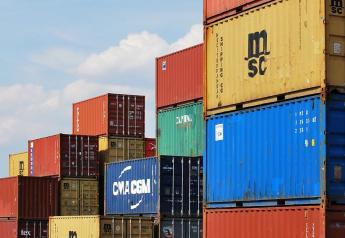3 Things to Know About Purchasing Farmland Now

Paul Schadegg, senior vice president of real estate operations at Farmers National Company (FNC), joined AgriTalk host Chip Flory on Wednesday. During the conversation, they discussed agricultural real estate demand, impact of interest rates on farmland market, and the outlook for values the second half of 2023. Here are three takeaways from their conversation:
1. Today, people are buying land throughout the year rather than during a more set, traditional time frame.
“We used to say we sell land from October to March and during the rest of the year, there's not much that happens,” Schadegg says. “But now what we're seeing is more non-typical buyers, and they're not afraid to buy land in the spring or summer – during the growing season – where typically that just used to not happen.
“Those guys are not afraid to go in and negotiate payback of inputs, or take a lease halfway through a year, or something like that. It doesn't necessarily mean that a farmer isn't going to bid on that land. Because if it comes up for sale, and it's in his wheelhouse, you know, they're definitely going to be there.”
In some cases the non-typical buyer is an investor, Schadegg says, but those individuals make up only 20% of land buyers. Eighty percent of ag land buyers are still farmers.
2. Thanks to technology (and the pandemic), you can buy land from your truck or tractor.
Today, farmers can plant corn and buy land at the same time, all while sitting in the comfort of their tractor. That fact is one of the practices the COVID pandemic helped create.
“When the pandemic hit, we started to have parking lot auctions, and we had to scramble to get an online platform set up,” Schadegg
says. “In today's world that's simply expected, and it has nothing to do with the pandemic anymore. It has to do with convenience.”
He adds that some people like to buy farms online, because they don’t want to stand or sit in a room with their neighbors as they bid on a piece of property.
“Some people just like the anonymity of buying online,” he adds.
Schadegg says there are still scenarios when a live auction makes the most sense to utilize, and the company employs a group of auctioneers for that purpose.
3. There’s still momentum in land sales, but it’s beginning to show signs of slowing.
Schadegg says Farmers National Company President Clayton Becker looks at the current scenario through a lens of what he calls profit and pressure.
On the profit side: “We're not seeing that value increase like we were a year ago, but we are definitely still seeing some good stable values,” he says. “For high-quality land, we're still seeing some great competition which sometimes drives that above-market value.”
From a pressure standpoint, FNC is starting to see less cash being used to purchase land and “a little more lending” happening across the country.
“I've said this before, but when we talk about any hiccup in the commodity markets that would have a pretty direct effect on land values. So, you know, we had a little bit of a scare here recently when we saw markets come down, but I think as long as we can maintain some of those levels, (land) does still look like a good opportunity.
Get the full details on the AgriTalk discussion with Schadegg here:







